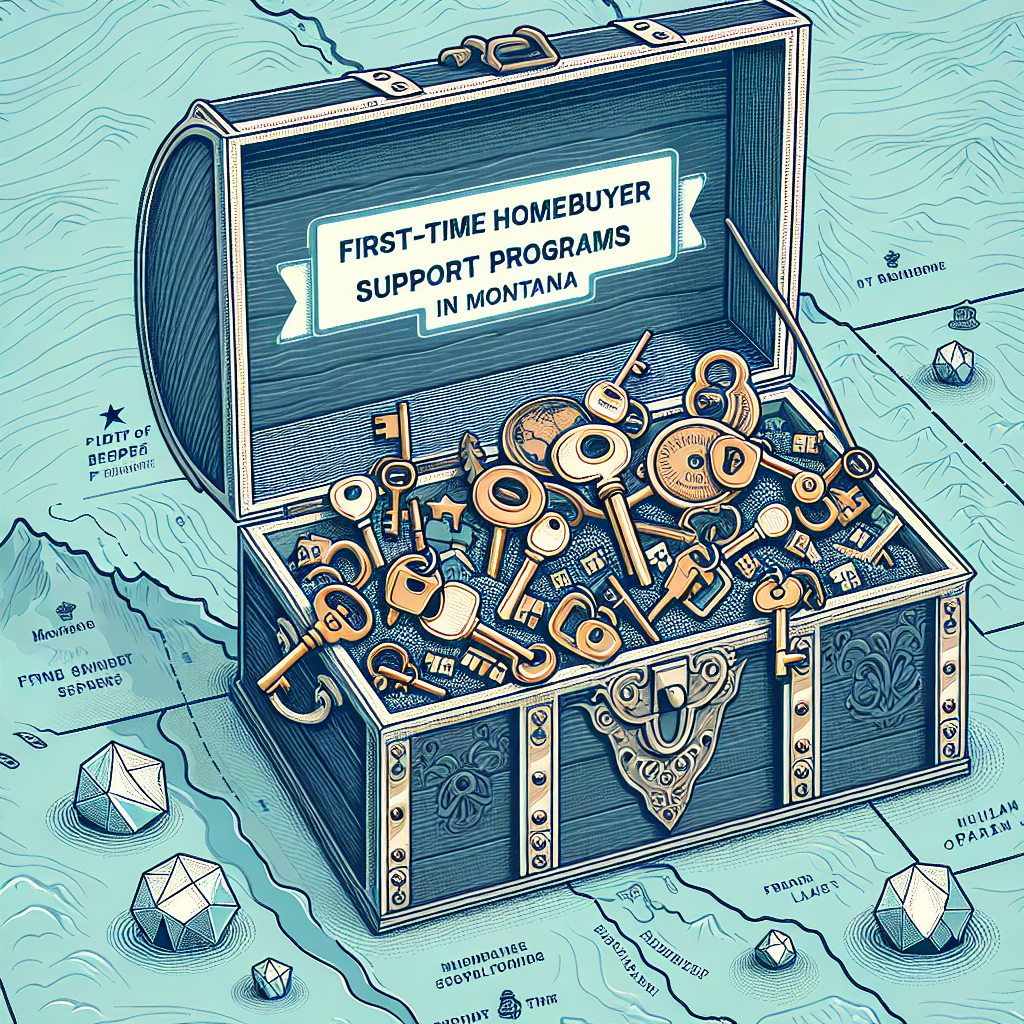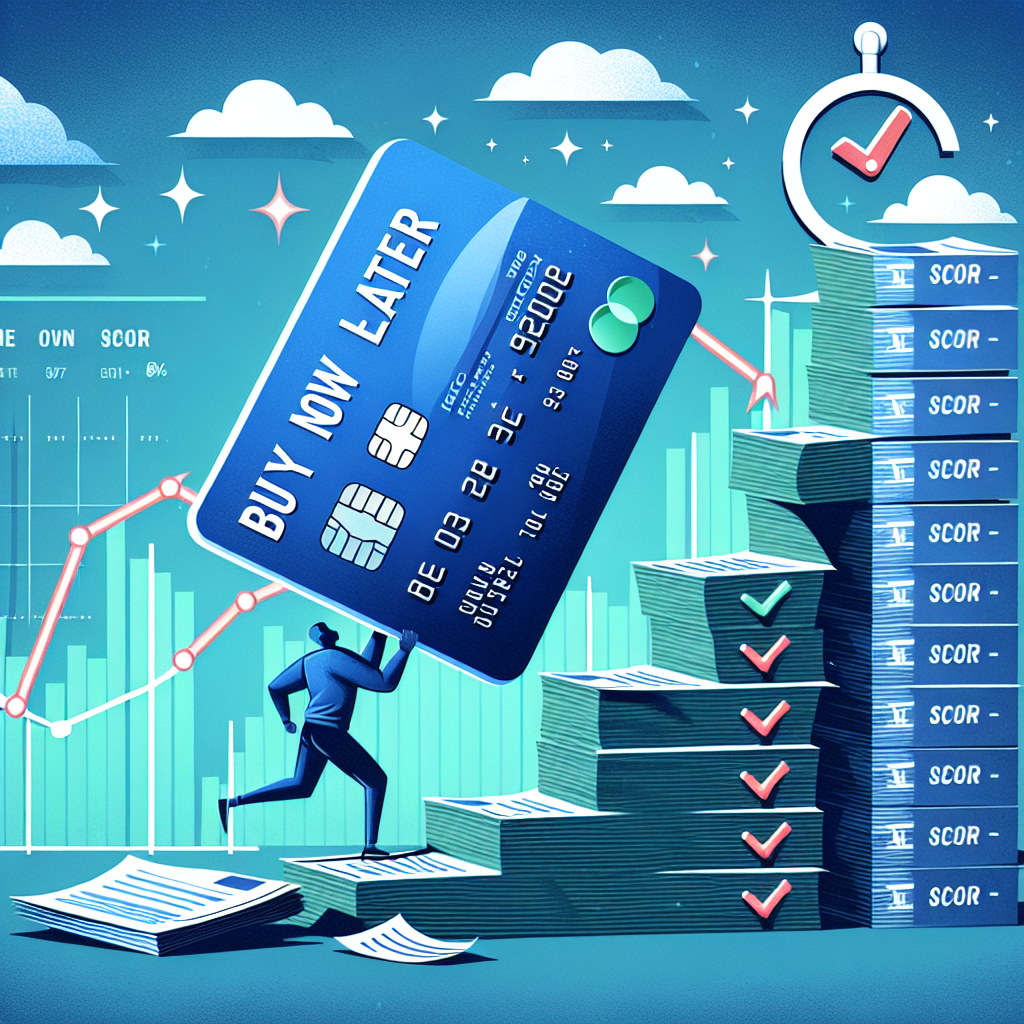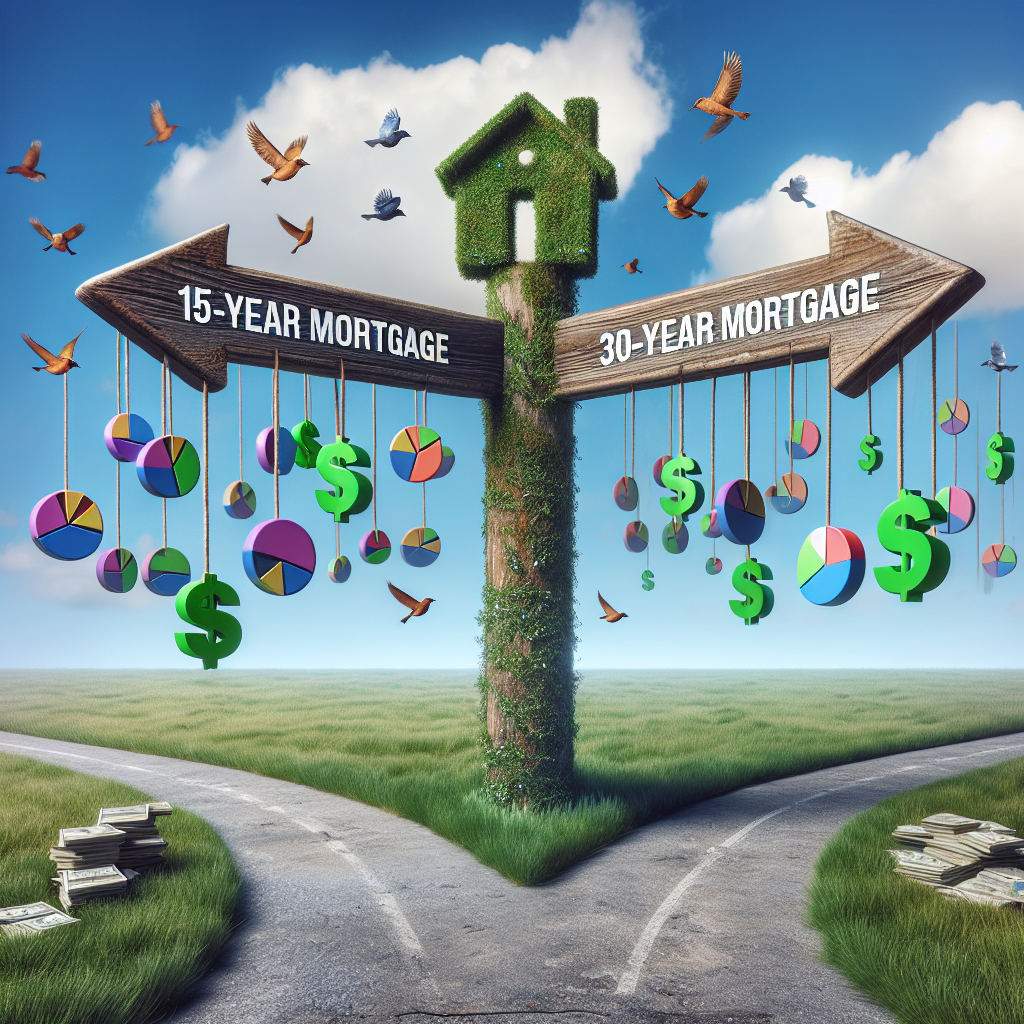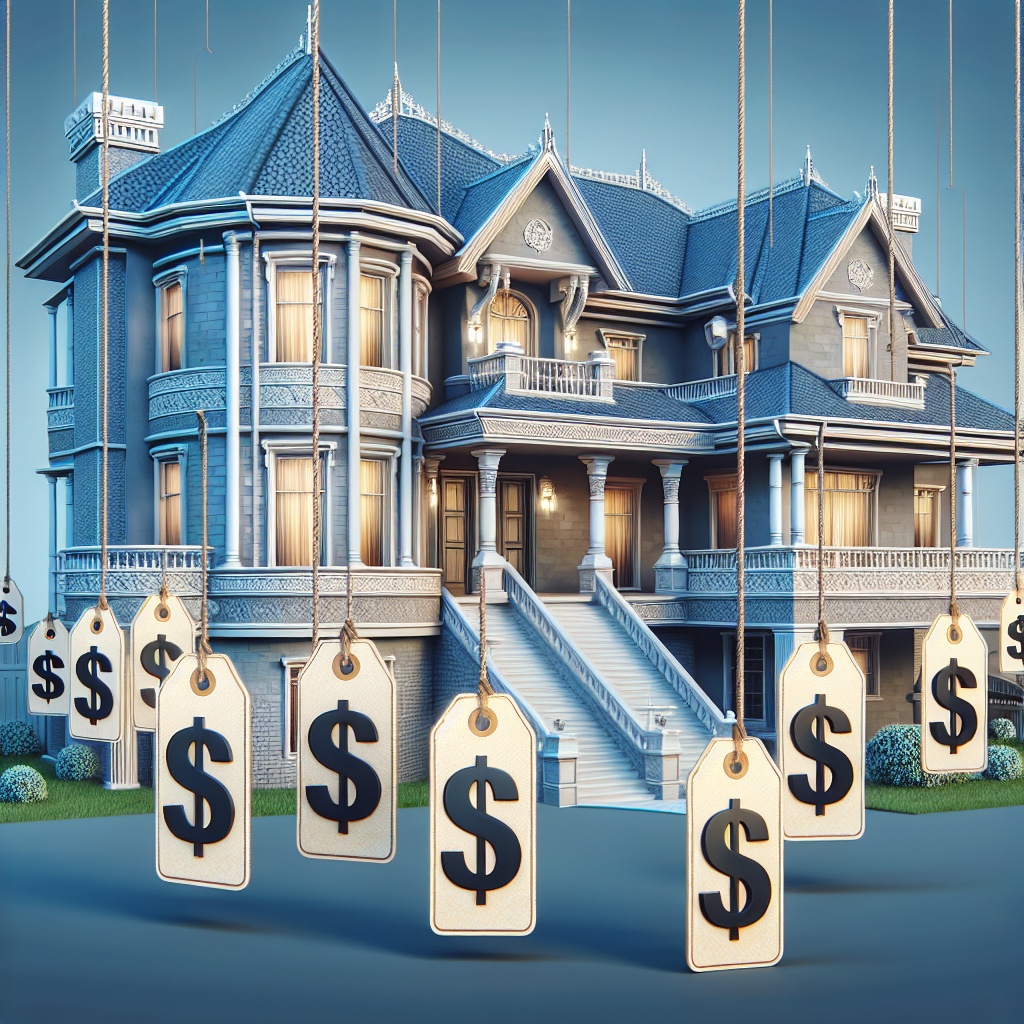
Unlocking Montana’s Hidden Gems: First-Time Homebuyer Support Unveiled
Embracing Montana’s rugged beauty through skiing, biking, hiking, or camping is a daily joy for locals — but beneath the vast “Big Sky” lies a need for a solid roof over your head. If you’re stepping into homeownership for the first time, securing that initial foothold is crucial. As of December 2024, the median down payment in the state clocks in around $9,099, setting the stage for various financial support avenues available to new buyers.
Montana Housing Regular Bond Program
A flagship initiative by Montana Housing, the Regular Bond Program targets rookies in the housing market offering a 30-year fixed-rate mortgage with interest that won’t bite too hard.
Key Eligibility Criteria
- Annual household earnings must not surpass set thresholds
- Debt-to-income ratios: Front-end capped at 31%, back-end limited to 41%
Pros & Cons
- Advantages: Compatible with single-family houses, condos, planned developments, and manufactured homes; boasts attractive low rates
- Drawbacks: Cannot be combined with conventional mortgage loans
Montana Housing 80% Combined Program
This combo loan setup lets you snag a Montana Housing-approved mortgage for 80% of your home’s price, paired with a second loan covering the rest (20%) through partners like NeighborWorks Montana. The income limits and purchase price caps mirror those of the Regular Bond Program.
Must-Have Qualifications
- At least 1% of the price paid upfront from your own pocket (minimum $1,000)
- Credit score floor of 640
- Front-end debt ratio max at 32%, back-end at 45%
- Completion of a homebuyer education course mandatory
- Same income and price limits as the Regular Bond program
Upsides & Downsides
- Perks: Flexible property types accepted; mortgage insurance is off the table
- Cons: The upfront personal fund contribution requirement remains
Montana Veterans’ Home Loan Program
Veterans stepping into homeownership for the first time in Montana can tap into this program offering interest rates noticeably below market norm. Availability is on a first-come, first-served basis — best to check in with your mortgage lender for real-time updates.
Eligibility Essentials
- Must be a Montana resident and a qualified veteran purchasing a first home
- A minimum personal contribution of $2,500 required
- Homebuyer education course completion necessary
Benefits and Limitations
- Benefits: Reduced interest rates; no income or purchase price ceilings
- Limitations: Certain property types like condos excluded; substantial personal down payment needed; primary residence maintenance required throughout term; funding is finite
Down Payment Assistance & Grants in Montana
For renters accustomed to monthly payments but daunted by the upfront down payment hurdles, Montana Housing extends a helping hand via two key assistance programs. Eligibility hinges initially on qualifying for the Regular Bond Program.
Bond Advantage Down Payment Assistance Program
Structured as a 15-year loan payable in monthly installments, this program provides up to 5% of your home’s sale price (capped at $15,000) to aid with down payment and closing expenses.
Pros and Cons
- Pros: Up to $15K in support; covers both down payment & closing fees; $1,000 cash contribution can originate from gifted funds
- Cons: Requires regular monthly repayments
MBOH Plus 0% Deferred Down Payment Assistance
Offering a similar aid cap of 5% (max $15,000), this alternative allows repayment to be deferred until you sell, refinance, or pay off your initial mortgage — no monthly payments or interest tacked on. The upfront $1,000 cash still applies.
Advantages & Trade-Offs
- Advantages: Assistance amount postponed until home sale or refinance; interest-free; gift funds accepted for initial cash contribution
- Trade-offs: Must repay if selling/refinancing early; comes with a $175 application fee
City-Specific Homebuyer Aid Programs
Billings First-Time Home Buyer Program
Billings makes available zero-interest, deferred-payment loans up to $15,000 for new buyers, prioritized for larger families and those with disabilities. Income limits adjust based on household size, ranging from $41,400 to $104,050.
What You’ll Need
- Income must fit program ceilings
- $1,000–$2,500 personal cash contribution
- Assets cannot exceed $15,000
- Completion of homebuyer education required
The Good & The Not-So-Good
- Good: Assistance up to $15,000; zero-interest; no monthly repayments until you sell
- Not-So-Good: Mandatory personal fund contribution; asset limits apply
Human Resource Council Down Payment Assistance (Mineral, Missoula, Ravalli Counties)
Residents in these counties have access to deferred-payment simple interest loans up to $35,000, payable only upon mortgage payoff or refinancing. The program targets modest housing purchases, providing essential aid tailored to county-specific limits.
Income caps span from $48,100 to $89,500 depending on county and household size. Purchase price caps stand at $238,000 (Mineral), $404,000 (Ravalli), and $445,000 (Missoula). Buyers must infuse a minimum of 3% down payment from personal funds and maintain a debt-to-income ratio below 42%. Completing a homebuyer education course is compulsory.
Pros & Cons Breakdown
- Pros: Up to $35K toward home purchase; no monthly payments until sale or refinance
- Cons: Personal 3% contribution necessary; repayment due if home is sold/refinanced ahead of schedule
Supplementary Montana First-Time Buyer Supports
Mortgage Credit Certificate (MCC)
If a Montana Housing mortgage isn’t in your cards, the Mortgage Credit Certificate might still save you extra green. This enables a direct tax credit of 20% on mortgage interest paid annually, capped at $2,000.
An upfront fee applies — typically $500 to Montana Housing plus potentially $250 from your lender — but these costs often pay for themselves through prolonged tax savings.
Other National Loan Programs Worth a Glance
- VA Loans: Backed by the U.S. Department of Veterans Affairs, ideal for active-duty military, veterans, and surviving spouses. No down payment needed and generally come with competitive interest rates.
- USDA Loans: Guaranteed by the U.S. Department of Agriculture, these loans require no down payment but restrict eligibility to rural areas and have income limits.
Familiarizing yourself with current lending conditions across banks, credit unions, and mortgage providers can further navigate Montana’s homebuying maze. Once your eligibility aligns with Montana Housing’s offerings, exploring participating lenders is the next logical step.
Statewide First-Time Buyer Program Exploration
For those venturing beyond Montana or seeking alternative options, it’s valuable to investigate other states’ first-time homebuyer incentives and support schemes that might better suit your individual circumstances.

The Real Deal on How Buy Now, Pay Later Influences Your Credit Score
Key Insights
- Buy now, pay later (BNPL) lets shoppers break down payments into bite-sized chunks, often interest-free.
- Your credit score might take notice if the BNPL company reports your activity to credit bureaus.
- Before diving in, it’s essential to get a clear grasp on the BNPL terms you’re signing up for.
If you’ve browsed e-commerce sites or stepped into a store lately, chances are you’ve bumped into BNPL offers. Notably, 21.2% of consumers with credit reports financed at least one purchase using BNPL loans, climbing from 17.6% back in 2021. It’s no shock that BNPL is gaining traction — for folks juggling tight budgets, spreading out payments can seem like a lifesaver.
These pay-in-installments schemes have captivated a vast shopper base. Even mainstream credit card companies are hopping on this trend with their own BNPL twists. Yet, it’s crucial to understand the financial ripple effects and possible credit score consequences. Here, you’ll unravel how BNPL functions, its effects on your creditworthiness, and ways to sidestep common BNPL traps before you commit.
Breaking Down the Mechanics of Buy Now, Pay Later
BNPL is a way to break your purchase into smaller, manageable chunks, often with zero interest—as long as you don’t miss a payment.
Thanks to its rising popularity, you’ll spot BNPL popping up during checkout both online and in brick-and-mortar stores.
The typical flow looks like this:
- Pick the BNPL option when finalizing your purchase.
- Drop your initial payment upfront.
- Settle the rest through a predetermined installment schedule.
For instance, snagging a $200 product might mean paying $50 down and $50 biweekly until you clear the balance. Many opt for BNPL to ease the strain on their wallets over time.
“They don’t ask for my Social Security number; so, it’s baffling how they check my credit,” Rosado admits. “Honestly, I lean on these services because my credit isn’t great and credit cards aren’t an option.”
Rosado is spot on: many BNPL providers carry out only a soft credit check, which doesn’t ding your score. But beware—some use hard credit pulls, potentially dragging your score down a notch.
“Our analysis of millions of credit records used in crafting FICO scores reveals that those with a spike in recent credit applications and new accounts show a somewhat higher risk of default,” explains Ethan Dornhelm, FICO’s VP of Scores and Predictive Analytics.
That said, a single hard inquiry rarely knocks your score by more than five points, Dornhelm reassures. “But for a small fraction of people, even one inquiry might be significant.”
When eyeing big loans—say a mortgage or refinance—even a tiny score shift could bump you into a different interest bracket.
Repeated hard pulls, however, can raise red flags. “Five BNPL loans lined up with reported hard inquiries? It screams desperation for credit,” warns Howard Dvorkin, CPA and chairman of Debt.com. “Tread carefully.”
BNPL and Credit Reporting: What’s the Connection?
Whether your BNPL activity lands on your credit report hinges largely on if the provider shares your data with credit bureaus.
As of December 2021, the uptake of BNPL loans has been accelerating swiftly.
Still, not every BNPL operator reports your payment behavior. Sometimes it depends on the exact loan product within the BNPL portfolio.
| Affirm | Does not report activity for 4 biweekly payment plans; reports longer-term loans as installment loans. | Pre-April 1, 2025 | Only first installment reported unless 30+ days overdue. |
| Affirm | Reports all plans and repayment activity to Experian. | From April 1, 2025 | Includes all payment plans. |
| Apple Pay Later | Plans to report to Experian, but currently hidden from lenders’ view. | Starting April 2024 | Not factored into credit scores yet. |
Incidentally, payment history drives roughly 30-35% of your credit score, making this reporting decision crucial.
With BNPL’s popularity rising, expect evolving dynamics between these services and credit bureaus.
How BNPL Can Shape Your Credit Profile
Falling behind on payments can wreak havoc on your credit—but keep in mind: not all BNPL apps report your payment details.
If you slip up but catch up quickly, your score may escape unscathed. Defaults on remaining balances, however, can lead to debt being handed off to collectors, with credit bureaus notified once accounts are roughly 90-120 days late—although timing varies by provider.
Once negative marks appear on your credit report due to BNPL misses, expect your score to drop. Since payment history is a heavy hitter in FICO’s scoring recipe, these missteps can sting.
Conversely, timely BNPL payments reported to credit bureaus can help boost your creditworthiness. Reliable, punctual payments showcase your credit savvy. This can especially aid those building or rehabilitating credit. Additionally, BNPL accounts can diversify your credit mix, representing about 10% of your score’s makeup.
Watch Out: Extra BNPL Risks Beyond Credit Scores
Besides credit-related hazards, BNPL can usher in other pitfalls unique compared to traditional payment methods.
- Rapid debt piling when juggling multiple BNPL plans.
- Accumulating late fees that ratchet up your total expenditure.
- Returns can get sticky; you might be on the hook for payments until refunds are processed.
- Some providers tack on sneaky fees for payment rescheduling or early payoffs.
Moreover, inconsistent reporting standards across BNPL players can muddle how your credit activity is reflected, complicating credit management.
Strategies to Sidestep BNPL Traps
Before you hop on the BNPL train, comb through the fine print focusing on:
- Whether they perform a credit check—and what kind.
- Do they report your payment behavior to credit bureaus?
Keep an eye on your credit reports regularly to catch any discrepancies early. If something’s off, alert both the BNPL provider and the credit bureau without delay.
To dodge late fees and credit score hits, consider automating payments. Use BNPL thoughtfully—only take on installments you can realistically handle without stretching your budget thin. Playing it smart helps you stay credit-healthy.
Final Thoughts on Using BNPL Wisely
For many, BNPL offers a handy alternative when traditional credit feels out of reach. Soft credit pulls and flexible payback plans are enticing. Yet, those BNPL options involving hard credit checks and credit reporting come with greater risk—but also the upside—if you keep payments punctual and borrow cautiously.
“It’s manageable for me as long as I don’t go overboard,” shares Rosado, who aims to keep total spending below $400 to keep installments under $100.
Debt expert Dvorkin sums it up bluntly: “If it’s beyond your means, just don’t buy it.” He also advises automating payments to avoid slip-ups.
Like any credit tool, your best bet is to keep balances low and pay on time; these habits are your allies in building a solid credit score over time.

Choosing Between 15-Year and 30-Year Mortgages: A Fresh Perspective
Key Insights to Keep in Mind
- Opting for a 15-year mortgage means heftier monthly bills but benefits from a reduced interest percentage.
- The 30-year route eases your monthly cash flow but results in heftier interest payments overall.
- Stretching your loan over 30 years invariably leads to paying significantly more in interest than the shorter term.
Your mortgage likely constitutes the heftiest chunk of your monthly expenses. How long you take to settle it—the loan term—plays a pivotal role in shaping your monthly dues. While the majority gravitate toward 30-year mortgages because they lighten monthly payments, that convenience comes with the price of increased interest. In contrast, those who choose the 15-year option brace for steeper monthly outlays but usually snag lower interest rates and reduce total interest disbursed.
Let’s unravel the nuances to help you decide which mortgage term suits your financial game plan best.
Distinguishing 15-Year from 30-Year Mortgages
| Monthly Payment | Steeper | More manageable |
| Annual Percentage Rate (APR) | Generally lower | Higher |
| Total Interest Over Life of Loan | Less | Considerably more |
The crux of the difference lies in the payoff timeline. The 30-year fixed mortgage stands as the classic pick for many Americans aiming to minimize monthly outlays. However, even though 15-year loans carry lower interest rates, their monthly payments tend to be more burdensome.
Crunching the Numbers: Real-World Comparison
The financial gap between a 15-year and a 30-year mortgage can be eye-opening. To illustrate, consider a $300,000 loan:
| Interest Rate* | 6.14% | 6.74% |
| Monthly Payment | $2,554 | $1,944 |
| Total Interest Paid | $159,777 | $399,768 |
| Total Cost of Mortgage | $459,777 | $699,768 |
*Rates as of July 8, 2025
Choosing the 30-year loan shaves over $600 off your monthly payment but means forking out nearly $240,000 more in interest over the life of the loan.
15-Year vs. 30-Year Fixed Mortgage Calculator
If you want to play with the numbers yourself, tools like Bankrate’s fixed mortgage calculator allow you to input your details and compare payment scenarios side-by-side.
What Makes the 15-Year Mortgage Tick?
- Typically offers a lower interest rate.
- Significantly less interest paid over time.
- Loan is wrapped up much faster, borrowing peace of mind.
- Accelerated equity buildup thanks to heftier principal payments.
The Flip Side
- Monthly bills are heftier to pay off the loan quicker.
- Qualifying can be more challenging due to payment size.
- Less breathing room in your budget for unexpected expenses or investments.
The 30-Year Mortgage: What’s in It for You?
This approach often grants more wiggle room in your monthly finances and usually comes with easier qualification hurdles. But beware—the interest load over time adds up fast.
- Lower monthly payments since the loan stretches over a longer haul.
- Flexibility to toss in extra payments when you can afford it.
- More disposable income potentially saved for rainy days or investment ventures.
- Income requirements tend to be less strict because payments are spread out.
Watch Out For
- Generally higher interest rates.
- Extended timeline means paying off your home takes longer.
- Interest accumulates substantially more over the life of the loan.
Exploring Mortgage Term Alternatives
While the 15- and 30-year mortgages dominate the scene, other loan terms and styles might better suit your situation.
- 20-Year Mortgages: A middle ground offering more manageable monthly payments than a 10-year loan but still saving on interest and shortening the payoff duration.
- Adjustable-Rate Mortgages (ARMs): Typically 30-year loans with a fixed rate for an initial window—say the first 10 years—then shift to variable rates annually afterward. This option suits those planning to relocate or refinance before the adjustment period kicks in.
Think carefully about how long you intend to stay put. If minimizing payments for a short spell is crucial, ARMs or interest-only loans might fit. However, if this is your forever home, a fixed-rate mortgage with steady payments probably wins.
How to Accelerate Paying Off a 30-Year Loan
Even with a 30-year mortgage, you can chip away at your debt quicker by paying more frequently or in bigger chunks. This technique, often dubbed “mortgage acceleration,” allows you to mimic the benefits of a 15-year loan while keeping upfront flexibility.
Methods include:
- Biweekly Payments: Splitting your monthly payment in half and paying every two weeks results in 13 full payments per year, knocking years off your loan term.
- Extra Principal Payments: Tossing a little extra cash—$100 or whatever suits your budget—toward the principal regularly or occasionally.
- Mortgage Recasting: If you can make a hefty lump sum payment (commonly $10,000 or more), your lender can reamortize your loan, lowering your monthly payment while keeping your rate and term intact.
Before diving in, double-check if your mortgage includes any prepayment penalties.
Which Mortgage Term Fits You Best?
Keep in mind that lenders expect stronger financial credentials for 15-year mortgages due to heftier monthly dues. They’ll want proof of higher income and lower debts. Still, despite the larger monthly hit, a shorter term can be a money-saver in the grand scheme. If that’s out of reach, a 30-year loan might be your best bet.
Here are some vital factors to weigh:
- Mortgage-to-Income Ratios: Experts recommend no more than 28% of gross income going toward housing payments and a maximum of 36% toward total monthly debt.
- Budget Reality Check: Reviewing your monthly cash flow and commitments helps decide what kind of payment you’ll comfortably manage. If a 15-year mortgage feels like a stretch, consider a 30-year plan and toss in extra payments when feasible.
- Income Stability: Variable or seasonal income might make qualifying for a 15-year loan tough and increase the appeal of the 30-year option with its flexibility.
Common Queries Answered
Can You Switch from a 30-Year Mortgage to a 15-Year One?
Absolutely. As long as you qualify, refinancing to a shorter loan term is possible. If your financial picture improves and you can handle heftier monthly payments, a 15-year mortgage might be worth considering.
Is It Smarter to Opt for a 15-Year Mortgage or Pay Extra on a 30-Year Loan?
This hinges on your unique financial landscape. Stable income and comfort with higher payments make a 15-year mortgage advantageous, locking in lower interest and faster payoff. Conversely, extra payments on a 30-year loan provide flexibility—you can accelerate payoff when possible but pause extra contributions if cash gets tight.
What Are the Current Mortgage Rates for 15-Year and 30-Year Loans?
As of July 8, 2025, the nationwide average interest rate for a 15-year fixed mortgage stands at 6.14%, while a 30-year fixed mortgage averages 6.74%.

Insider’s Guide to Leading REIT ETFs: Unlocking Real Estate Wealth in 2025
Real estate investment trusts, or REITs, offer a way for investors to pocket a share of real estate profits without the headaches of owning or managing physical properties. However, picking individual REITs demands deep dives and careful scrutiny to avoid costly pitfalls.
For those who prefer a hands-off approach but still crave solid returns from real estate, REIT ETFs come to the rescue. By bundling multiple REITs into a single fund, these ETFs provide broad exposure while spreading risk, so no single laggard drags your portfolio down.
Presented below is a curated rundown of some of the most sought-after REIT ETFs shaping the market today.
Top REIT ETFs to Watch in 2025
Before sinking funds into a REIT ETF, take a moment to examine the fund’s prospectus—it sheds light on the investment blueprint and portfolio composition.
Note: Return figures sourced from Morningstar as of July 1, 2025; dividend yields pulled from Yahoo Finance.
Vanguard Real Estate ETF (VNQ)
The Vanguard Real Estate ETF often tops the popularity charts. Its strategy revolves around mirroring an index comprised of firms that own and operate commercial and residential real estate across the U.S.
- 5-year annualized return: 6.5%
- Dividend payout: 4.1%
- Expense ratio: 0.13%
iShares U.S. Real Estate ETF (IYR)
One of the pioneers among REIT ETFs, this fund similarly tracks an index reflecting U.S.-based real estate enterprises, either through direct ownership or related involvement.
- 5-year annualized return: 6.5%
- Dividend payout: 2.6%
- Expense ratio: 0.39%
Real Estate Select Sector SPDR Fund (XLRE)
Representing a key pillar in the S&P 500, XLRE zeroes in on large-cap players dominating the American real estate landscape.
- 5-year annualized return: 7.1%
- Dividend payout: 3.3%
- Expense ratio: 0.08%
iShares Global REIT ETF (REET)
Seeking worldwide real estate exposure? REET tracks a global index that includes U.S. holdings among other international real estate players.
- 5-year annualized return: 6.6%
- Dividend payout: 3.5%
- Expense ratio: 0.14%
JPMorgan BetaBuilders MSCI U.S. REIT ETF (BBRE)
BBRE casts a wider net by encompassing small, mid, and large-cap companies mostly entrenched in commercial and niche real estate sectors across America.
- 5-year annualized return: 8.4%
- Dividend payout: 3.2%
- Expense ratio: 0.11%
Snapshot: REIT Market Stats
As of 2024, the U.S. REIT sector boasts a market capitalization exceeding $1.3 trillion, with equity REITs composing roughly 77% of this value. Dividend yields have hovered around 3-5%, reinforcing REITs’ reputation as reliable income generators.
Decoding REITs: What You Need to Know
REITs funnel investments into diverse real estate assets. A defining feature is their regulatory requirement to redistribute at least 90% of taxable income back to shareholders as dividends, sidestepping corporate tax and positioning themselves as dependable dividend payers.
Broadly, REITs split into three camps:
- Equity REITs: Hold ownership of physical properties or land outright.
- Mortgage REITs: Finance real estate via mortgages and loans.
- Hybrid REITs: Blend both equity holdings and mortgage-related assets.
REIT ETFs: Weighing the Upsides and Downsides
The Bright Side
- Compelling total returns. Equity REITs have clocked an average annual gain of 8.2% over the past two decades (through September 2024), offering a juicy dividend stream minus landlord duties.
- High liquidity. Unlike physical property, REIT ETFs can be bought or sold on the open market instantly when the stock exchange is operating.
- Diversification booster. Due to their relatively low correlation with traditional equities, adding REITs often smooths portfolio volatility.
The Catch
- Price swings. REIT ETFs are not immune to market jitters and can experience sharper fluctuations than brick-and-mortar real estate.
- Dependence on financial markets. Since REITs pay out most taxable income as dividends, they lean heavily on debt and equity markets for growth capital—making them vulnerable when borrowing costs surge.
- Tax treatments. Dividends from REITs generally count as ordinary income and can be taxed at higher rates, especially if reinvested, underscoring the importance of aligning investments with personal financial goals.
Key Tips for Selecting and Managing REIT ETFs
1. Do your homework on funds
When choosing REIT ETFs, scrutinize dividend consistency, yields, historical performance, and the fund’s underlying holdings. Integrating a REIT ETF can provide a valuable chunk of diversification within your portfolio.
2. Keep tabs on your strategy
Regularly reassess your holdings to stay in sync with evolving market conditions and your financial ambitions. Use complimentary tools offered by your broker to aid in tracking and rebalancing.
Where to Purchase REIT ETFs?
REIT ETFs are accessible through virtually all major brokerage platforms, enabling investors to seamlessly add real estate exposure to their baskets alongside stocks and bonds.
Disclaimer: Readers should undertake independent research before committing capital to investment vehicles. Past returns do not guarantee future gains.

Clash of Cash Back Titans: Capital One Savor vs. Chase Freedom Unlimited
Summary Snapshots
When it boils down to racking up cash back on your go-to spending categories, two contenders stand tall: the Capital One Savor Cash Rewards Credit Card and the Chase Freedom Unlimited®. If your wallet leans heavily toward dining out and entertainment, Savor tends to hold the upper hand for long-haul usage. Meanwhile, Freedom Unlimited flexes with a heftier welcome bonus and shines on miscellaneous purchases.
Pause and weigh the enduring benefits before pinning your hopes on either card.
Quick Look at What’s on the Table
| Rewards Breakdown |
|
|
| Sign-Up Bonus | $200 cash bonus after $500 spent in 3 months | Earn up to $300 cash back in the first year via an extra 1.5% cash back on up to $20,000 spent |
| Intro APR | 0% for 15 months on purchases and balance transfers; then variable 19.24%–29.24%. Balance transfer fees of 3% within 15 months, none beyond promotional offers. | 0% intro APR for 15 months; then variable 18.99%–28.49%. Balance transfers incur 3% fee first 60 days, then 5% thereafter. |
| Annual Fee | No annual fee | No annual fee |
How Do These Cards Stack Up?
Both cards pack solid punch in popular segments — dining notably — but your ideal pick hinges on your spending mix and personal reward preferences.
Welcome Bonus Face-Off
Champion: Chase Freedom Unlimited
While Savor hooks you up with a modest $200 bonus after spending $500 within three months — a straightforward target — Freedom Unlimited aims higher. Its sweeter $300 potential bonus unfolds as an additional 1.5% on everything you spend during your inaugural year, up to $20,000, translating to:
- 6.5% back on Chase Travel bookings
- 4.5% back on dining and drugstore buys
- 3% back on all other purchases
Bear in mind, your reward payday hits at year-end, and to max those perks, you’d need to chalk up roughly $1,667 monthly charges. With the right spending cadence, that extra $100 over Savor is within reach.
Rewards Rate Showdown
Champion: Capital One Savor Cash Rewards
Freedom Unlimited outperforms Savor with a 1.5% back on “everything else” — a boost over Savor’s 1%. For all-around swipers, Freedom’s edge on general purchases can sweeten the deal. However, Savor throws down a rich 3% cash back across dining, entertainment, popular streaming, and grocery shopping (excluding superstores like Walmart and Target). Freedom Unlimited backs dining and drugstore buys with 3% but notably skips out on groceries and entertainment rewards.
Entertainment aficionados who regularly rock concerts can reap a hefty 8% back on shows via Capital One’s Entertainment portal, making Savor a no-brainer if your wallet gravitates towards those categories.
Conversely, if your spending is more of a mixed bag, Freedom Unlimited’s consistent 1.5% on everyday buys and the chance to amplify rewards by pairing with other Chase cards grabbing Ultimate Rewards points could tip the scales.
Annual Fee
Result: Dead Heat
Neither card levies an annual charge, so you’re covered either way on that front.
Foreign Transaction Fee
Winner: Capital One Savor Cash Rewards
Capital One cards generally waive foreign transaction fees, and Savor stays true to that trend. On the flip side, Freedom Unlimited tacks on a 3% fee for overseas purchases or transactions made through foreign websites involving currency conversion.
If you’re globe-trotting or snagging items internationally often, Savor’s no-foreign-fee policy makes it the smarter pick.
Cash Back Champions: Which Card Reigns Supreme?
Both cards suit jet-setters and social butterflies, but their reward categories highlight differing strengths that may sway your choice.
Savor Cash Rewards vs. Freedom Unlimited: Spending Breakdown
The cash rewards your lifestyle nets vary. A general spender will see a different payout than someone who leans into entertainment and grocery purchases.
| Dining | $400 | $12 | $12 |
| Groceries | $250 | $7.50 | $3.75 |
| Entertainment | $300 | $9 | $4.50 |
| Streaming | $50 | $1.50 | $0.75 |
| Travel (via portal) | $200 | $10 | $10 |
| Drugstore | $70 | $0.70 | $2.10 |
| Miscellaneous | $400 | $4 | $6 |
Here, Freedom Unlimited takes the crown for the opening year thanks to its lucrative sign-up bonus, but Savor nudges ahead in the long haul with slightly superior ongoing rewards.
If your wallet favors miscellaneous purchases over dining or groceries, Freedom Unlimited may ultimately deliver stronger value over time.
Why Opt for Capital One Savor Cash Rewards?
If your spending wheel often lands at grocery aisles, eateries, entertainment hubs, or travel portals, Savor could be your best pal. Here are some extras that might sweeten the pot:
Perks in the Package
- Extended warranty coverage
- Zero liability for fraudulent charges
- Concierge services to streamline your life
- Travel perks like free flight price-drop protection, round-the-clock travel assistance, and accident insurance
- Access to exclusive experiences via Capital One’s entertainment and dining portals
Plus, an enticing introductory APR on purchases and balance transfers. A 3% fee on balance transfers applies for the first 15 months — par for the course in this space.
How to Redeem Your Rewards
- Statement credits against your balance
- Direct checks
- Gift cards to your favorite brands
- PayPal transactions
- Purchases on Amazon.com
Bonus: You can also flip your cash back into Capital One travel points at a 1:1 ratio through their travel portal.
Credit Score Needed
Good to excellent credit (670–850) opens the door.
Why Consider Chase Freedom Unlimited?
The Freedom Unlimited card is a household name in the points-earning game, packing strong perks and earning potential that scales up as you go.
Extra Features
- Three months of free DashPass subscription, followed by a half-price discount for nine months (activation by 1/31/2025)
- Purchase protection on eligible items
- Extended warranty coverage
- Trip cancellation and interruption insurance
- Chase Pay Yourself Back tool for flexible redemption
This card toes the same line as Savor with its 0% intro APR and balance transfer fees (3% or $5 minimum in the first 60 days, then 5%).
Cash Back Redemption Routes
- Statement credit or direct deposit
- Gift cards
- Travel bookings through Chase’s travel portal
- Amazon.com and Apple purchases
- Donations to charity
You can also transfer points to Chase’s premium travel partners to unlock elevated reward values.
Credit Score Needed
The same good-to-excellent credit benchmark (670–850) applies.
The Final Word
Whether Capital One Savor or Chase Freedom Unlimited delivers more bang for your buck pivots on your spending style, lifestyle, and goals. Don’t rush—scrutinize the long game and factor in your habits before staking your claim. For those exploring other avenues, consulting this year’s top-ranked cash back cards can unearth other worthy contenders.
Bonus Factbite
According to recent data, average US household credit card spending hovers around $7,000 annually. Cards that offer 3%+ back on key categories like dining and groceries can effectively put hundreds of dollars back into your pocket each year, making category-specific rewards like Savor’s particularly valuable for higher spenders.

Demystifying the FSA ID: Your Gateway to Federal Student Aid
Unlocking the FSA ID: What Exactly Is It?
Serving as your digital key, the Federal Student Aid ID (or FSA ID) grants students and their families access to the U.S. Department of Education’s online platforms. Planning to apply for government-backed educational funding? Then snagging an FSA ID can turbocharge your application journey and streamline managing your aid down the line.
Breaking Down the FSA ID
Essentially, your FSA ID doubles as your login credentials—a unique combo of username and password—allowing you to:
- Sign and electronically submit your FAFSA application.
- Automatically populate your FAFSA form using last year’s details.
- Access the myStudentAid mobile app seamlessly.
Keep in mind, each individual involved—whether student or parent—must forge their own FSA ID to reap these perks. Here’s your roadmap:
Steps to Establish Your FSA ID
- Fill in your details: Head to the official Federal Student Aid portal and provide key identifiers such as your Social Security Number (SSN), full name, birthdate, email, phone, and mailing address.
- Create a standout username and password: Passwords must span 8 to 30 characters, incorporating at least one uppercase letter, one lowercase letter, and a number. Special characters can also spice things up, though they’re optional.
- Set up security questions: Choose four challenge questions with answers only you’d know, which come into play if you ever need to recover your credentials.
- Verify contact info uniqueness: Only one FSA account ties to each email or phone number. Double-check your contact details haven’t been used for another FSA ID.
Creating an FSA ID Without a Social Security Number
Limited scenarios allow for FSA ID creation absent a Social Security number:
- If you’re a parent or spouse of a FAFSA applicant but lack an SSN.
- If you hail from the Freely Associated States, which include the Republic of the Marshall Islands, Federated States of Micronesia, Republic of Palau, and Commonwealth of the Northern Mariana Islands.
In these cases, the standard registration steps apply except that you’ll authenticate your identity by answering “knowledge-based questions”—queries revolving around personal history like previous addresses or banks you’ve dealt with.
Who’s Required to Have an FSA ID?
If signing and submitting your FAFSA online appeals to you or your student, snagging a FSA ID is non-negotiable. This digital identity smooths processes like:
- Prefilling information from prior FAFSA applications.
- Importing tax details directly from the IRS.
- Reviewing and printing your Student Aid Report without hassle.
Moreover, students and their families who need to update or verify federal financial aid info electronically will rely on their FSA ID to do so.
The Importance of the FSA ID in the Aid Application Process
Think of the FSA ID as the cornerstone of your journey toward securing educational funding. It’s the linchpin in completing the FAFSA application, unlocking doors to a variety of assistance programs such as scholarships, grants, work-study opportunities, and federal loans.
The good news? You likely already have what it takes to create your FSA ID from any device with internet access. Once set up, you’re one step closer to turning college dreams into reality.
Quick Stats on FAFSA and FSA ID Usage
In recent years, over 20 million FAFSA applications are filed annually, with the majority completed online using an FSA ID. Approximately 90% of applicants utilize this streamlined method to access federal and state aid, underscoring the FSA ID’s vital role in financial aid administration.
Clearing Up Common Queries About the FSA ID
What’s the Difference Between an FSA ID and the FAFSA?
The FSA ID acts as your personal login to start filling out the FAFSA, which itself is the official form required to apply for federal student aid.
What If I Forget My FSA ID?
No worries — you can recover your account by following prompts on the official Federal Student Aid website. Just be prepared to supply your linked email, phone number, or correctly answer your previously established security questions.
Does the FSA ID Password Ever Expire?
Your FSA ID remains valid indefinitely. Password changes are only requested under security circumstances or when recovery is necessary, with clear instructions guiding you through resetting it.
Can I Complete the FAFSA Without an FSA ID?
Starting from the 2024-25 FAFSA cycle, the platform requires both students and parents (if applicable) to have an FSA ID to submit applications online.

Unlocking the Full Power of Your Roth IRA: 7 Compelling Reasons to Maximize Contributions
If you’ve already taken the step of opening a Roth IRA, you’ve set the cornerstone for a crucial part of your financial future: stashing away funds for life after work. However, tapping into the full capacity of this account can be a game-changer in your retirement strategy.
Let’s dive into how to supercharge your Roth IRA and, more importantly, why going all-in could be one of the sharpest moves you make for your long-term financial health.
1. A Roth IRA Doubles as Your Personal Longevity Safety Net
One standout feature of a Roth IRA? No forced distributions at any age — unlike many tax-deferred accounts where retirement withdrawals are mandatory. This means you get to decide when to dip into your pot, allowing your nest egg to flourish until the moment suits you best. Whatever your current age, the future you will undoubtedly appreciate the foresight behind maxing out those contributions.
2. Your Heirs Can Reap Tax-Free Rewards
It’s possible you’ll never touch a dime from your Roth IRA, leaving it as a legacy of tax-free wealth for your beneficiaries. Typically, heirs must withdraw the assets within a decade post-inheritance; yet, thanks to the Roth’s tax-exempt status, those distributions come without a tax bill. Even better, the funds might continue to grow during that span, amplifying the account’s value.
3. Seize the Moment — Roth Rules Could Tighten Down the Road
The opportunity to contribute to a Roth IRA isn’t etched in stone. Legislative shifts might lower income thresholds or impose stricter limits on conversions from tax-deferred accounts. Capitalizing on current contribution rules ensures you’re not caught off-guard by future restrictions, securing your stake while the gate is wide open.
Quick Fact:
As of 2024, the annual Roth IRA contribution limit is $6,500 for individuals under 50, and $7,500 for those 50 and above. Income phase-outs begin at $138,000 for single filers and $218,000 for married couples filing jointly, underscoring the importance of timely maxing out before potential legislative changes.
4. Hedge Against Uncertain Future Tax Landscapes
The tax environment is a slippery slope; no one knows what rates will look like tomorrow. By maxing out your Roth IRA and paying taxes on contributions now, you’re diversifying your tax exposure. This foresight can shield you from possible hikes in future tax rates, giving you greater control over your financial destiny.
5. Clarity and Control Over Your Retirement Cash Flow
What ultimately matters is what lands in your pocket after taxes — this is the real measure of your retirement funding. A Roth IRA gives you full ownership of after-tax dollars, offering crystal-clear insight into your spending power down the line. That’s a stark contrast to traditional 401(k)s or IRAs, where Uncle Sam claims a share upon withdrawal.
6. Contributions Today Plant Seeds for Tomorrow’s Growth
Every dollar you funnel into your Roth IRA doesn’t just sit idle; it embarks on a journey of compound growth over years — sometimes decades. The longer your money has to marinate tax-free, the greater the potential harvest when retirement rolls around.
7. A Financial Lifeline When Emergencies Strike
Since taxes have been settled upfront on your Roth IRA contributions, you enjoy the rare luxury of penalty-free withdrawals of your contributions at any time, for any reason. Should a serious financial crisis drain your primary emergency buffer, your Roth IRA can serve as a dependable fallback without triggering tax penalties.
Timing Is Everything: When to Make Those Contributions
Remember, contributions for the 2025 tax year can be made all the way through Tax Day in April 2026, and for 2026 contributions, you have until April 2027. If you haven’t yet reached your annual maximum, prioritize maximizing last year’s allowance before zeroing in on future limits.
Ultimately, fully funding your Roth IRA isn’t just about dollars and cents — it’s a strategic move that boosts your retirement readiness, ensures tax-free growth, and grants flexibility for life’s unexpected twists. Give this financial tool the respect it deserves in your wealth-building arsenal, and lay the groundwork for a future of confidence and comfort.

Unlocking the Full Potential of Amazon Cash Back Rewards
Essential Insights
Stacking up your Amazon cash back haul is entirely doable through multiple avenues — from turbocharged cash back credit cards to the Amazon-specific plastic in your wallet. If you’re an Amazon Prime subscriber, the perks ramp up further with complimentary shipping and steep discounts to sweeten the deal. And let’s not overlook the prime-time events like Amazon Prime Day and the fresh Big Deal Days that bring jaw-dropping bargains.
Amazon’s knack for simplifying shopping and slashing the time it takes is undeniable. But with a handful of savvy moves, you can snag extra perks without compromising on convenience. We unpack how tapping into cash back reward cards, Amazon co-branded credit cards, savvy shopping portals, and more can bulk up your savings on every Amazon buy.
Here’s a lineup of eight stellar tactics to rake in cash back on Amazon purchases.
1. Rock a Cash Back Credit Card
When you swipe a cash back credit card for Amazon shopping, it fast-tracks your way to padding your wallet — especially if Amazon is your go-to hangout. Plenty of cards are out there, but top contenders offer juicy returns:
- Chase Freedom Flex® awards 3% cash back in a category of your choosing — online shopping included. Keep in mind, this 3% applies up to $2,500 per quarter across select categories, with a steady 1% back beyond that.
- Discover it® pumps 5% back on rotating quarterly categories (up to $1,500 when you activate). Although their Amazon-specific card is no longer issued, Discover blends lucrative cash back on Amazon and Whole Foods with everyday categories like dining and gas.
- Amazon Prime Visa targets Prime devotees, often welcoming new cardholders with an instant Amazon Gift Card. The rewards stack up as:
| Rotating 10%+ back | Selected categories on Amazon.com with active Prime membership |
| Unlimited 5% back | Amazon.com, Amazon Fresh, Whole Foods Market & Chase Travel with Prime membership |
| Unlimited 2% back | Gas stations, restaurants, local transit, and rideshares |
| Unlimited 1% back | All other purchases |
This card also throws in perks like concierge service, access to luxury hotels, and robust travel and purchase protections to sweeten the wallet and the journey.
2. Lock in with the Amazon Prime Store Card
The Amazon Prime Store Card earns you 5% back on Amazon.com and Whole Foods but sticks firmly to Amazon’s ecosystem — it’s a closed-loop card, so your rewards stop outside Amazon’s realm. New cardholders get an $80 Amazon gift card right after approval.
Let’s glance at how the Amazon Prime Visa stacks up against the Amazon Prime Store Card:
| Rewards Rate | 5% on Amazon, Amazon Fresh, Whole Foods & Chase Travel; 2% on restaurants & gas; 1% on others | 5% on Amazon.com & Whole Foods (in-store code) |
| Sign-Up Bonus | $250 Amazon Gift Card (limited time, Prime members only) | $60 Amazon Gift Card |
| Annual Fee | None (requires $139 Prime membership) | None (requires $139 Prime membership) |
| Additional Benefits |
|
None beyond rewards |
3. Stack Rewards by Shopping via Cashback Portals
Want to layer your savings like a pro? Start by initiating Amazon purchases through cashback portals such as BeFrugal or TopCashBack. These platforms credit you a percentage back once you create an account and agree to their terms.
When paired with a cash back card like the Amazon Prime Visa, you could be reaping up to 13% total back — 5% from your card plus up to 8% from the shopping portal. That’s some serious stacking power.
4. Score Deals at Amazon Warehouse
Eyeing massive savings? Amazon Warehouse is your treasure trove of open-box, nearly-new, or used goodies from top-notch brands. Packaging might be a little banged up, but the quality inside often speaks for itself.
Because deals vanish fast — first come, first served — you’ll want to pounce when you spot a gem. And since this is all on Amazon’s turf, you can pay your way, including with reward-optimized cards.
5. Explore Amazon’s Spectrum of Savings Tools
Your hunt for bargains is far from over once you check out the warehouse. Amazon’s arsenal of savings paths includes:
- Today’s Deals: Flash sales that flare up abruptly and wrap up by day’s end.
- Subscribe and Save: Auto-renew essentials to score free shipping plus 5-15% or higher discounts.
- Amazon Coupons: Exclusive site coupons stacking with other discounts on everyday must-haves like toiletries and skincare.
- Woot! Deals: Lightning sales with monstrous markdowns, coupled with Prime shipping if you’re in the club.
6. Leverage Free Shipping Perks
While free shipping isn’t cash back per se, it slashes your spending significantly — especially if you’re an Amazon Prime fan. Get two-day free shipping on eligible items and, in many places, upgrade to same-day or Saturday delivery if you meet minimums.
By tapping into these shipping benefits, your Prime membership stretches further — pairing faster delivery with cash back rewards intact.
7. Employ Price Tracking Tools to Nail the Best Bargains
Amazon’s prices often dazzle with affordability, yet if you’re doubting your deal, price tracking tools like CamelCamelCamel and Keepa let you peek into an item’s price trajectory. Not exactly cash back but check the historical lows before buying, and you’ll maximize your savings.
8. Ride the Wave of Amazon Prime Day
A crown jewel for Prime members, Amazon Prime Day unlocks exclusive steals, including Buy With Prime and invite-only specials. Here, some goods flex with cash back rates soaring up to 25% when using an eligible Amazon card — far beyond the usual 5% baseline.
What’s the Deal with Amazon Big Deal Days?
Don’t mix this up with Prime Day. Amazon’s Big Deal Days, a two-day extravaganza (next scheduled for October 8-9, 2024), puts Prime members front and center for spectacular discounts across a wide range of products. Think of it as a warm-up act before Black Friday and Cyber Monday.
This extended shopping spree eases holiday spending by spreading out deals over a longer window, giving Prime members more breathing room.
In Summation
If you’re among the millions who swear by Amazon, you might be stunned at just how many ways there are to juice your cash back returns. Whether you wield a cash back credit card optimized for retail, or stick with Amazon’s specialized cards, your rewards can swell significantly.
Plus, stacking deals with Amazon warehouse finds, Prime Day offers, and strategic use of shopping portals can turbocharge your savings. If you haven’t yet picked a cash back card, exploring options tailored to your spending style will pay dividends down the line.
*Details regarding Chase Freedom Flex® and Amazon Prime Store Card sourced independently by Bankrate; these specifics have not been vetted by the card issuers.
Content related to Bank of America was last refreshed on July 8, 2025.

Decoding Mortgage Rates Amid Economic Downturns
Worries about a looming recession have resurfaced, sparking unease over the potential rise in mortgage costs. Yet, this time around, the trajectory of interest rates remains anything but predictable. If a recession truly looms on the horizon, can we confidently expect mortgage rates to climb relentlessly?
Understanding What an Economic Recession Really Means
At its simplest, a recession is marked by two successive quarters where the gross domestic product (GDP) takes a nosedive. This exact scenario unfolded in the first half of 2022. Moreover, in the early months of 2025, the reinstatement of tariffs on U.S. imports by the Trump Administration has stirred concerns among some experts, who fear these measures could dampen economic momentum and fan the flames of recession anxiety.
Officially, the National Bureau of Economic Research (NBER) is the entity that declares the onset and end of recessions. But nailing down the start of a recession is no walk in the park — the simple two-quarter GDP shrinkage test is only one piece of a much more intricate puzzle. Additional economic signals, historically considered hallmarks of recession, continue to paint a somewhat contradictory picture:
- Inflation trends are easing. While rising inflation often turbocharges recession risks, recent data shows inflation rates have been on a downward path. As of March 2025, inflation hovered around 2.4%, signaling some relief.
- GDP contraction is underway. GDP, the yardstick for a nation’s economic output, recently displayed signs of shrinkage after a solid three-year streak of growth. The first quarter of 2025 saw a slight dip of 0.3% annually, contrasting with the 2.4% growth recorded in the closing quarter of 2024.
Supplemental insight: According to recent economic projections, the probability of the United States entering a recession by March 2026 sits at approximately 36%, an uptick from 26% recorded at the tail end of 2024. This statistic underscores growing market jitters but stops short of a definitive forecast.
Mortgage Rates and the Echoes of Past Recessions
This year, mortgage rates have been anything but steady — displaying both stubborn persistence and notable swings. Historical data reveals that fixed mortgage rates are closely tethered to the 10-year Treasury yield, a benchmark sensitive to sweeping economic shifts rather than isolated market quirks.
On one hand, recessions can usher in an environment where mortgage interest rates trend downward, potentially easing the financial burden for homebuyers. On the flip side, tightening lending protocols often accompany economic downturns, making loan approvals tougher and less accessible despite lower rates.
Key Points from Historical Cycles:
- Mortgage yields typically mirror longer-term government bond trends, responding more to economic fundamentals than short-term noise.
- Lower interest rates usually help with affordability but don’t guarantee loan approval as credit criteria can harden.
- Borrowers facing hardships during recessions should brace for a mixed landscape — cheaper money but more scrutiny.
What Does a Recession Mean for Your Mortgage?
Despite the turbulence, fixed-rate mortgages provide a layer of stability for homeowners. Borrowers are shielded by established safeguards: if your loan is sold or transferred, you will receive clear notifications explaining where and how to continue submitting your payments, ensuring uninterrupted service.
Strategies to Navigate Payment Challenges
Should a downturn or personal hardship throw a wrench in your finances, your first move should be reaching out to your mortgage servicer without delay. There are several adaptive pathways worth exploring:
- Repayment plans: These allow temporary forbearance where missed payments are tacked on to future installments or settled via a lump sum later down the road.
- Interest-only arrangements: Less common and requiring approval, these plans ease immediate burdens by deferring principal payments, making only interest due for a limited time.
- Loan modifications: If your financial troubles are long-lasting, renegotiating your mortgage terms—be it interest rate adjustments or extended repayment schedules—might offer relief.
Whatever option suits your situation, communication is key. Ceasing payments without proper dialogue with your servicer risks credit damage and could trigger foreclosure procedures. Proactive engagement can often unlock options tailored to your circumstances.

Sky-High Price Tags: Where Buying a Home Costs a Small Fortune
As of March 2025, the median price for a home across the United States stubbornly lingered above $400,000, a figure reported by the National Association of Realtors. Yet, in the country’s most elite real estate hotspots, $400K barely scratches the surface of what’s needed for a down payment.
City-level sales data pulled together by ATTOM Data Solutions, analyzed by Bankrate for Q1 2025, sheds light on the priciest corners of the nation’s housing market. Unsurprisingly, California places a stronghold on the top spots.
Top 10 Most Lavishly Priced Cities for Homebuyers
Dominated predominantly by quaint Californian towns, the list also features upscale waterfront communities along the East Coast. Here’s a snapshot of the ten priciest cities paired with their median home prices from the first quarter of 2025:
- Atherton, California: $10.95 million. By a wide margin, the crown jewel of Silicon Valley ranks as the priciest U.S. locale to snap up a home.
- Newport Coast, California: $5.81 million. This swanky gem in Orange County has long held a reputation for sky-high prices.
- Teton Village, Wyoming: $5 million. Dreaming of ski-in, ski-out access? This mountaintop retreat delivers.
- Boca Grande, Florida: $4.9 million. Waterfront properties dominate this quiet Gulf Coast enclave’s real estate scene.
- Los Altos, California: $4.8 million. Another entrenched Silicon Valley hotspot where prices haven’t lost steam.
- Sea Island, Georgia: $4.53 million. This charming coastal resort draws affluent homebuyers seeking exclusivity.
- Portola Valley, California: $4.13 million. Although this Silicon Valley town saw median prices dip slightly—from $5 million in early 2022—it’s still steep.
- Old Westbury, New York: $4.05 million. The Hamptons city’s median sale price catapulted from $2 million the previous year, signaling sharp market momentum.
- Burlingame, California: $3.98 million. In the context of pricey Silicon Valley towns, this looks like a relative bargain.
- Rancho Santa Fe, California: $3.93 million. This upscale San Diego suburb witnessed a pandemic-fueled surge in values.
Noteworthy Housing Market Statistics
The housing landscape reveals some staggering percentage changes in median prices over the past year, such as Teton Village’s explosive 80% spike and Old Westbury’s 50% leap. Meanwhile, Water Mill, New York, saw an extraordinary price drop of over 87%, illustrating the volatility that can shake luxury markets.
Most Expensive Medium-Sized Cities (Population 50,000–500,000)
- Newport Beach, California: $3.3 million, marking an 18% year-over-year gain.
- Palo Alto, California: $2.89 million, with a modest 5% rise.
- Cupertino, California: $2.6 million, noted for a slight dip despite being Apple’s home turf.
- Santa Barbara, California: $2.5 million, having soared by 37% in twelve months.
- Los Gatos, California: $2.4 million, enjoying an 18% boost in values.
Top-Tier Large Cities with Pricey Real Estate (Population 500,000+)
- Manhattan: $1.55 million. The Big Apple’s iconic borough remains—as always—a fortress of pricey dwellings, despite changing urban dynamics.
- Brooklyn: $995,000. While still more affordable than Manhattan, Brooklyn’s reputation for wallet-friendly homes is eroding fast.
America’s 25 Priciest Housing Markets — The Full Breakdown
| 1 | Atherton | California | 7,030 | $10,950,000 | +42.92% |
| 2 | Newport Coast | California | 10,224 | $5,807,500 | +5.38% |
| 3 | Teton Village | Wyoming | 999 | $4,995,000 | +80.15% |
| 4 | Boca Grande | Florida | 633 | $4,900,000 | -1.53% |
| 5 | Los Altos | California | 43,666 | $4,769,625 | +9.85% |
| 6 | Sea Island | Georgia | 94 | $4,530,300 | +10.30% |
| 7 | Portola Valley | California | 6,645 | $4,125,000 | +4.85% |
| 8 | Old Westbury | New York | 4,198 | $4,050,000 | +50.62% |
| 9 | Burlingame | California | 42,794 | $3,981,000 | +6.87% |
| 10 | Rancho Santa Fe | California | 9,460 | $3,925,250 | -1.90% |
Tips for Navigating This Jaw-Dropping Market
If homeownership feels like an elusive dream amid these historic price tags, know that options and workarounds exist for savvy buyers willing to think outside the box.
1. Hunt Around for Mortgage Deals
With interest rates dancing unpredictably and fees wildly varying between lenders, don’t settle for the first mortgage offer that lands in your inbox. Scrutinize at least three quotes. Remember, the monthly payment is only part of the story—the down payment, often demanding 20% of the purchase price, can be a colossal hurdle ($80,000 on a $400,000 property). Thankfully, Federal Housing Administration and Department of Veterans Affairs-backed mortgages offer relief: FHA loans require as little as 3.5% down, while VA loans might waive down payments entirely for qualified buyers.
2. Eye Fixer-Uppers as Affordable Alternatives
In a landscape marked by scarce inventory and soaring prices, older homes can offer a middle ground. But brace yourself: according to renovation pros, the current environment of inflated material costs and labor shortages often pushes renovation expenses 15–20% beyond initial budgets.
3. Ponder More Wallet-Friendly Locations
When your dream neighborhood slips out of reach, why not explore metros where the price tag is gentler? Cities like Buffalo ($213,000 median), Philadelphia ($225,000), Louisville ($235,500), St. Louis ($179,919), Kansas City ($235,000), and Milwaukee ($230,000) continue to offer homes within a more reasonable budget.